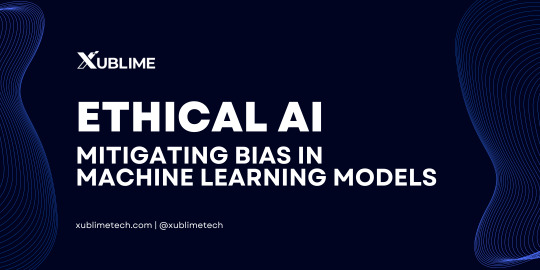#implementation research toolkit
Explore tagged Tumblr posts
Text
Get Expert Research Synopsis Writing Assistance at Wrirk.com - India's Leading Academic Writing Assistance
Are you seeking expert guidance for writing your PhD thesis or research paper writing? Look no further than our professional services at Wrirk.com. We are a trusted name in the industry, offering a comprehensive range of writing assistance tailored specifically for PhD candidates in India.
Our team of experienced writers is well-versed in the required formats, including Synopsis Format,thesis writing,research proposal writing, and data analysis services, ensuring that your work meets all the necessary requirements. With our help, your journey towards achieving your academic goals becomes smoother and more efficient. Contact us now to avail of the best PhD thesis writing services in India!

#bibliometric and content analysis#bibliometric analysis methodology#synopsis for phd admission#phd synopsis presentation#implementation research toolkit#dissertation synopsis#phd research proposal writing services india#research paper writing#sample research proposal for phd in india#synopsis of research paper#Synopsis Sample For Thesis#Thesis Synopsis Sample#Sample Synopsis For Phd#Synopsis Writing Format#Phd Synopsis Sample#Sample Synopsis Format#Synopsis Format#Synopsis Format For Phd#Research Synopsis Sample#Thesis Synopsis Format#Synopsis Of Research Paper#Research Synopsis Example#Sample Research Proposal For Phd In India#Bibliometric And Content Analysis#Phd Synopsis Presentation#Phd Research Proposal Writing Services India#Implementation Research Toolkit#Online Thesis Writing Services In India#Online Thesis Writing#Best Phd Thesis Writing Services In India
0 notes
Text
The science behind "Act as If": it's actually a CBT technique
Although science has yet to prove the 3D manifesting effect of the Law of Assumption, the “act as if” manifestation technique we so very often read about and practice does have some research support as a cognitive-behavioral intervention.
Cognitive-behavioral therapy (CBT) has long been a cornerstone of modern psychology and psychotherapy, offering individuals practical tools to understand and improve their mental well-being. "Act As If" has emerged as a powerful and transformative intervention technique.
"Act As If" is a behavioral strategy that encourages individuals to consciously adopt the mindset and behaviors of the person they aspire to become, even when faced with self-doubt or challenging circumstances. Whether you're seeking to enhance your self-esteem, overcome obstacles, or simply better understand the inner workings of your mind, the "Act As If" approach can be a valuable addition to your mental health toolkit.
🎀 Why "Act As If" Works (in psychology, anyway)
At its core, the "Act As If" technique is a cognitive-behavioral strategy designed to encourage individuals to adopt the mindset and behaviors of the person they want to be. It is rooted in several core principles that guide its implementation. "Act As If" requires individuals to consciously act as though they have already achieved their goals, even when they may doubt their abilities or face daunting challenges. This helps build self-confidence and creates a self-fulfilling prophecy, where the mind and body work in tandem to manifest positive change.
The theoretical underpinnings of "Act As If" are deeply intertwined with self-perception theory - people infer their own attitudes, emotions, and abilities by observing their own behaviors. In the context of "Act As If," this means that by consistently engaging in the behaviors associated with their goals, individuals can alter their self-perception, ultimately reinforcing their self-belief.
🎥🎲 The Role of Role-Playing
By immersing oneself in the character of the person they want to become, individuals can better understand and internalize the attitudes and behaviors required for success. Role-playing provides a practical and hands-on approach to "Act As If," allowing individuals to experiment with different mindsets and behaviors and assess their impact on their self-perception and real-life outcomes.
We often engage in "self-sabotage," acting ineffectively despite knowing better ways of handling difficult situations. There are many reasons for this, and one is our dysfunctional, automatic thoughts. Thoughts like "I won't succeed no matter how hard I try" or "I can't do this" can hinder our actual abilities to do something well.
For example: you believe you are too overweight to go to the gym and not feel bad about yourself, or you don't believe you can actually lose the weight you need. When you let these kinds of thoughts influence your behavior, you might find yourself avoiding situations you find intimidating for thinking they're not for someone like you, or believing it's a lost cause. "Acting as if" can help alter these dysfunctional thoughts. Instead of engaging with these thoughts, "acting as if" might have you engaged in all of the activities someone who believed they could succeed would engage in: for instance, making an appointment with a personal trainer, which would result in more accountability, a better ability to perform exercises correctly, and a more rewarding experience overall. If you were out of shape before, "acting as if" can help you get in shape sooner.
The catch in the "act as if" technique is that we can use it even if we are 100% sold on our dysfunctional automatic thoughts. We don't have to wait until our thoughts change to step into the role we'd prefer. We instead step into the role, which can result in our thoughts changing more quickly and more permanently. Better yet, we don't have to wait for the law to kick in before we get what we want.
🧸👩🏻🏫Steps for "Acting As If"
💭Step 1: Identify the automatic thought or dysfunctional belief that is getting in your way.
🔄Step 2: Identify all of the things you would do if you believed the exact opposite of that thought to be successful in your goal.
🎭Step 3: Rehearse those behaviors: Act as if. Literally role-play. You can do it talking to yourself when you are alone, you can do it in your head during mindless moments of the day; you can even do it with your eyes closed, laying in bed, and visualize yourself engaging in those behaviors. The point is to be familiar enough with the behaviors that you can use them without thinking about them too much.
🎬Step 4: "Act as if" some more. Rehearse the behaviors some more. Maybe get more creative (start dressing up as the person you want to be, make a journal of all the things that happened on your role playing day, don't feel stupid - no one has to know anyway!)
💁🏻♀️Step 5: Engage in the behaviors you rehearsed. Each time a dysfunctional thought comes to mind, smile at it, and continue as planned.
By following this you may, at the very least, come across more confidently. Most people find that in practicing this regularly, they start to disbelieve the self-defeating thoughts. Having several experiences of success is a great way to undo the assumption that you will always fail. And after a while, there's no "acting" necessary. ;)
#law of assumption#loa tumblr#neville goddard#loablr#loassumption#loass#loassblog#manifesting#shifting#4d reality#assume and persist#loa assumptions#assumption#loa advice#loa#loa blog#master manifestor#manifestation#loassblr#loass post#loass blog#edward art#affirm and persist#persistence#affirmations#affirmdaily#robotic affirming#affirmyourlife#inspirational#personal development
48 notes
·
View notes
Photo

Ocean policy depends on data.
Resource managers and policymakers need robust data about marine ecosystems for decision-making and setting sound policies. An international team of researchers, led by CeNCOOS, has outlined best practices to standardize observations of seafloor invertebrates.

Measuring body size is critical to harmonizing the diverse types of data that scientists around the world are collecting. Implementing this toolkit will help bridge the gap between science and policy to aid in managing the impacts of fisheries, oil and gas exploration, deep-sea mining, and climate change on marine life.

This work contributes to the efforts of the Global Ocean Observing System to deliver Essential Ocean Variable information for seafloor invertebrate abundance and distribution. You can read the full story and learn more on our website.
140 notes
·
View notes
Note
hi and thank you so much for running this blog! i was wondering if you could recommend any drug use harm reduction resources that are specific to minors/teens/preteens. i work with 11-14 year olds and am looking for resources to provide them with. im just beginning my research on the topic and thought you would be a good place to start.
yes!!
So Drug Policy Alliance made an entire curriculum that has 13 lessons on various harm reduction topics, and includes slideshows, lesson plans, facilitator's guides, and handouts. They provide specific information on different types of drugs, and I think they do a pretty good job of using neutral, non stigmatizing language. It provides information on some of the harmful effects of drugs in a way that isn't using scare tactics or blaming people who use drugs. They also provide information on harm reduction strategies, reversing overdoses, drug education, etc. I think this is a really great resource to integrate into health classes or any setting where there's more oversight and restrictions on what kind of content you can share.
I'll also link the Youth Harm Reduction: A Toolkit for Service Providers by Interior Health, which also has a lot of good links to other youth specific resources.
I've seen a lot of educators have success with introducing the harm reduction principles to teens, creating reflection and discussion questions, and creating roleplay scenarios for applying harm reduction principles. I would also recommend reading this article about Liberatory harm reduction from an interview with Shira Hassan, that talks about the importance of understanding the radical history of harm reduction, and how to actually implement harm reduction in autonomous and liberatory ways that meet the needs of our communities instead of getting co-opted by the state and nonprofits. I think that explaining the harms of criminalization and the War on Drugs, as well as the role of activism is a super important part of educating about harm reduction, instead of just sharing the type of harm reduction done by social services.
Let me know if there's any other kind of resources you want!
12 notes
·
View notes
Text
Level Up Your Business Acumen: My Experience with the GOLD- Face-to-Face Seminar

As a business professional always striving for growth, I recently attended the GOLD-Programm Face-to-Face Seminar for Business Clients. This immersive experience exceeded my expectations in every way, and I'm eager to share the positive impact it had on my professional development.
Empowering Curriculum:
The heart of the GOLD-Programm lies in its comprehensive curriculum. Designed to address the diverse needs of business leaders, the program covered a wide range of essential topics. From market trends and leadership strategies to effective communication and negotiation tactics, the seminars provided valuable insights backed by research and real-world examples. These sessions not only equipped me with new knowledge but also challenged my existing perspectives, sparking a renewed sense of purpose and motivation.
Expert Guidance:
One of the most enriching aspects of the GOLD-Programm was the caliber of the facilitators. Each session was led by seasoned professionals with extensive experience in their respective fields. Their expertise and engaging delivery style made the learning process dynamic and interactive. They fostered open discussions, allowing participants to share their own experiences and learn from each other. This collaborative environment fostered a sense of community and provided valuable networking opportunities.
Actionable Strategies
The GOLD-Programm went beyond simply providing information. The interactive workshops, case studies, and group activities allowed us to put theory into practice. We actively participated in brainstorming sessions, developing actionable strategies that I can readily implement within my own organization. This hands-on approach ensured that the learnings wouldn't just be theoretical but could be translated into tangible results for my business.
Investing in the GOLD-Programm Face-to-Face Seminar was a wise decision. The comprehensive curriculum, expert guidance, and focus on practical application have empowered me to tackle business challenges with renewed confidence and a toolkit of effective strategies. I highly recommend this program to any business seeking to elevate their skills and propel their career to the next level.

tune
share
more_vert
2 notes
·
View notes
Text
Mastering SMO: Essential Tools for Success

Unlocking Social Success: Top SMO Tools to Boost Your Strategy
In the rapidly evolving landscape of digital marketing, Social Media Optimization (SMO) has emerged as a critical strategy for businesses to enhance their online presence and engage with their target audience effectively. SMO involves utilizing various tools and techniques to optimize social media platforms for maximum visibility and engagement. In this comprehensive guide, we’ll explore the essential SMO tools that every marketer should have in their arsenal to achieve success in today’s competitive social media landscape.
Get 20% Discount click here
Understanding the Importance of SMO
Social media platforms have become integral to the marketing strategies of businesses across industries. With billions of users actively engaging on platforms like Facebook, Instagram, Twitter, LinkedIn, and others, these platforms offer unparalleled opportunities for businesses to connect with their audience, build brand awareness, drive traffic to their websites, and ultimately, boost conversions and sales. However, to harness the full potential of social media, it’s essential to implement effective SMO strategies supported by the right tools.
The Role of SMO Tools in Optimization
SMO tools play a crucial role in streamlining and optimizing various aspects of social media marketing. These tools help marketers manage multiple social media accounts efficiently, analyze performance metrics, schedule posts for optimal times, monitor brand mentions and engagement, conduct audience research, and much more. By leveraging the right SMO tools, marketers can save time, increase productivity, and achieve better results from their social media efforts.
Wanna know more about Internet Marketing
Essential SMO Tools for Marketers
Hootsuite:
Hootsuite is a popular social media management platform that allows marketers to schedule posts, track performance analytics, monitor conversations, and manage multiple social media accounts from a single dashboard. With its intuitive interface and comprehensive features, Hootsuite is a must-have tool for any SMO strategy.
Buffer:
Buffer is another powerful social media management tool that enables marketers to schedule posts, analyze performance data, and engage with their audience across various social media platforms. With its user-friendly interface and robust analytics, Buffer helps marketers streamline their social media workflow and optimize their content strategy for maximum impact.
Sprout Social:
Sprout Social is a comprehensive social media management tool that offers a range of features, including social listening, analytics reporting, content scheduling, and audience engagement tools. With its advanced analytics and customizable reports, Sprout Social empowers marketers to gain valuable insights into their social media performance and make data-driven decisions to improve their SMO efforts.
Canva:
Canva is a popular design tool that allows marketers to create stunning visuals for their social media posts, including graphics, infographics, and videos. With its user-friendly interface and extensive library of templates and graphics, Canva makes it easy for marketers to design professional-looking content that stands out on social media platforms.
Conclusion:
In conclusion, mastering SMO requires a combination of strategic planning, creative content creation, and the right set of tools to execute your strategy effectively. By incorporating essential SMO tools like Hootsuite, Buffer, Sprout Social, BuzzSumo, and Canva into your marketing toolkit, you can streamline your social media workflow, optimize your content strategy, and achieve better results from your social media efforts. Whether you’re a small business looking to increase brand awareness or a seasoned marketer aiming to drive conversions and sales, investing in the right SMO tools can help you stay ahead in today’s competitive digital landscape.
2 notes
·
View notes
Text
The Essential Toolkit for Mastering SEO: A Guide to the Best SEO Tools
In the ever-evolving world of digital marketing, Search Engine Optimization (SEO) stands as a cornerstone technique, essential for any business aiming to increase its online visibility. The right SEO strategy can drive traffic, boost rankings, and enhance the overall user experience. Central to implementing this strategy effectively are SEO tools, which come in various forms, each offering unique functionalities to cater to different aspects of SEO.
The Importance of SEO
SEO is no longer just an option for digital marketing; it's a necessity. It's about understanding what people are searching for online, the answers they seek, the words they use, and the type of content they wish to consume. Knowing the answers to these questions will allow you to connect to the people who are searching online for the solutions you offer.
Types of SEO Tools
Keyword Analysis Tools: These are foundational for any SEO strategy. They help identify the keywords and phrases most relevant to your business and most likely to attract the right kind of traffic.
Content Optimization Tools: These tools assist in making your content more effective by analyzing keyword density, suggesting relevant synonyms, and ensuring that content is optimized for search engines.
Technical SEO Tools: They delve into the more technical aspects of your website, such as site speed, mobile-friendliness, and site structure, which are crucial for improving search rankings.
Link Building Tools: These tools aid in identifying link-building opportunities and managing backlinks, which are vital for enhancing site authority and search rankings.
Local SEO Tools: Particularly important for local businesses, these tools help optimize your website for local search results, making it easier for nearby customers to find you.
SEO Analytics and Reporting Tools: These provide insights into your SEO campaigns' effectiveness, track search rankings, and understand user behavior on your site.
How SEO Tools Help Businesses
Improved Search Rankings: By identifying the right keywords and optimizing website content, SEO tools can significantly improve your search engine rankings.
Enhanced User Experience: Technical SEO tools help in optimizing website speed and mobile-friendliness, leading to a better user experience.
Data-Driven Decisions: Analytics tools offer detailed insights into user behavior, enabling businesses to make informed decisions.
Time and Cost Efficiency: Automated tools save time and resources, allowing businesses to focus on other critical aspects of their operations.
Examples of Free SEO Tools
Google Analytics: A comprehensive tool for monitoring website traffic and user behavior.
SEMrush: Offers a suite of tools for keyword research, site audits, and competitor analysis.
Ahrefs: Known for its advanced link analysis and keyword research capabilities.
Moz Pro: Offers tools for site audits, keyword research, and link building.
Yoast SEO: A popular WordPress plugin that helps optimize website content.
Conclusion
Embracing the right SEO tools is not just about improving your website’s search engine ranking; it’s about connecting with your target audience, understanding their needs, and delivering a solution that resonates. In a world where online visibility is synonymous with success, SEO tools are not just tools; they are vital cogs in the machinery of digital marketing.
#googleads#marketingstrategy#digitalmarketingtrends#digitaladvertising#digitalmarketer#marketingstrategies#internetmarketing#seo#marketingconsultant#socialmediastrategy
4 notes
·
View notes
Photo










The United States Congress created Endangered Species Day in 2006 with the adoption of Senate Resolution 431. The resolution encouraged "the people of the United States to become educated about, and aware of, threats to species, success stories in species recovery, and the opportunity to promote species conservation worldwide." It also encouraged schools to spend at least 30 minutes teaching students about the day; encouraged groups such as businesses, organizations, private landowners and agencies to collaborate on educational information for the schools; and encouraged people of the United States "to observe the day with appropriate ceremonies and activities." In short, the day is for learning why it's important to protect endangered species, for learning how to take part in protection efforts, and for celebrating species that have recovered as a result of these efforts.
Each year, events are held on the day and throughout the month in places such as zoos, parks, aquariums, museums, wildlife refuges, schools, and botanical gardens. There are often speakers, tours, exhibits, and children's activities. Every year, there is also a National Endangered Species Day Youth Art Contest, where students in grades K-12 learn about endangered or threatened wildlife and support conservation with their art.
Conservation efforts have helped with the recovery of many species, such as the gray wolf, gray whale, grizzly bear, whooping crane, Kirtland's warbler, and peregrine falcon. Some animals, such as the gray wolf, bald eagle, and American alligator have recovered in large part because of the U.S. Endangered Species Act of 1973. In general, species are saved by the combination of research, coordination, intensive management of conservation efforts, increased public awareness, and education. Human awareness is important because many of the main drivers of extinction of species are caused by humans. Some of the leading causes of extinction are overhunting, overfishing, global warming, pollution, habitat fragmentation, and invasive species.
The IUCN Red List of Threatened Species does the most comprehensive worldwide accounting of threatened species, by listing plants, animals, fungi, and algae. Species can be listed between "near threatened" and "extinct," with "endangered" being in the middle. Over 27,000 plants and animals are listed as threatened with extinction, appearing somewhere on the scale. In the United States, the Endangered Species Act determines how threatened species are classified, and species are usually assessed by the U.S. Fish and Wildlife Service. About 700 animal species and 900 plant species are threatened or endangered in the country. Because of the many threats that species face, it is fitting there is an Endangered Species Day.
How to Observe Endangered Species Day
Today should be centered around learning about threats to species, becoming educated on how you can help to protect species and then working to help them, and celebrating species that have been recovered. There are many ways these things can be done, as well as other ways the day can be celebrated!
Learn about endangered species at the websites of the IUCN Red List of Threatened Species or the U.S. Fish and Wildlife Service.
Learn about some of the issues that species face that cause them to become endangered, such as overhunting, overfishing, global warming, pollution, habitat fragmentation, and invasive species.
Find an event to attend. Many often take place at zoos, parks, aquariums, museums, wildlife refuges, schools, and botanical gardens. Check in your community or online for events.
Host an event. Use the online toolkit to help you with your planning.
Donate to groups that support conservation efforts, such as the IUCN Red List of Threatened Species, the World Wildlife Fund, the Defenders of Wildlife, and the National Wildlife Federation.
Learn about some endangered species that have recovered.
If you are a teacher, implement information about endangered species into your lessons today. If you are a young person, participate in the National Endangered Species Day Youth Art Contest (the deadline to enter precedes the day). If you are a college student, read some online suggestions on how to celebrate the day.
Watch an environmental film, a documentary about endangered animals, or a film about endangered species from the Video Project.
Read a book about endangered species.
Source
#Great Panda#San Diego Zoo#Bronx Zoo#New York City#Ring-tailed lemur#Coquerel's sifaka#tiger#Western lowland gorilla#giraffe#Indian Gharial#Grevy’s Zebra#Asian elephant#Zoo Zürich#Switzerland#Zurich#travel#original photography#animal#flora#fauna#tourist attraction#landmark#Endangered Species Day#EndangeredSpeciesDay#hird Friday in May#USA#19 May 2023#indoors#outdoors
8 notes
·
View notes
Text

In the dynamic world of fitness sales, success hinges on more than just a toned physique or a charismatic smile. I’ve witnessed firsthand the pitfalls that often trip up new gym salespeople. In this exclusive exposé, we’ll delve into the five common mistakes that can sabotage your sales efforts and, more importantly, unveil the strategic solutions to elevate your game.
Neglecting Personalized Connections: The Human Touch Matters
One of the cardinal sins in gym sales is treating potential clients like mere numbers on a spreadsheet. Forget generic pitches; successful sales are built on genuine connections. Personalize your approach by actively listening to clients’ fitness goals, concerns, and aspirations. Establishing a rapport builds trust, paving the way for long-lasting relationships and a thriving client base.
Solution: Institute a comprehensive client assessment process that goes beyond the standard questionnaire. Take the time to understand individual motivations and challenges, creating a personalized fitness plan that demonstrates your commitment to their success.
Overemphasis on Features, Underemphasis on Benefits: Speak to Their Dreams
New gym salespeople often fall into the trap of bombarding clients with technical details about equipment, classes, and facilities. However, clients are more interested in how your offerings will transform their lives. Shift your focus from features to benefits, and align your pitch with the emotional and tangible outcomes your gym provides.
Solution: Craft compelling narratives around success stories from your gym. Highlight real-life transformations, emphasizing not only physical changes but also the enhanced well-being, confidence, and quality of life that your gym delivers.
Fear of Follow-Up: Persistent, Not Pushy
In the world of fitness sales, the fortune is in the follow-up. Yet, many new salespeople hesitate to reach out consistently, fearing they might come across as pushy. The truth is, potential clients often need multiple touchpoints before committing. Don’t let fear hinder your success.
Solution: Implement a structured follow-up system that combines various communication channels. Whether it’s personalized emails, friendly phone calls, or engaging social media interactions, a consistent follow-up strategy will keep your gym top-of-mind for prospective clients.
Lack of Product Knowledge: Be the Expert They Need
An essential aspect of successful salesmanship is knowing your product inside out. Clients look to you not just as a salesperson but as a trusted advisor in their fitness journey. Fumbling over product details undermines credibility and diminishes trust.
Solution: Invest time in ongoing training and education to stay abreast of the latest fitness trends, equipment features, and class offerings. Being the go-to expert in your gym positions you as a valuable resource, instilling confidence in potential clients.
Failure to Address Objections: Turn “No” into “Yes”
It’s natural for clients to have concerns and objections. However, new salespeople often shy away from addressing these head-on, fearing rejection. Embrace objections as opportunities to showcase your expertise and dedication to client success.
Solution: Develop a comprehensive objection-handling toolkit. Anticipate common concerns and equip yourself with well-researched responses that not only address objections but also reiterate the unique value your gym brings to the table.
Conclusion:
In the highly competitive realm of gym sales, success is not solely measured by the number of memberships sold but by the impact you have on clients’ lives. By avoiding these common mistakes and implementing strategic solutions, new gym salespeople can elevate their performance, build lasting client relationships, and contribute to the overall success of their fitness establishments. Remember, in the world of fitness sales, mastering the art is not just about selling memberships—it’s about empowering others to embark on transformative journeys towards health and wellness.
For gym owners and managers seeking to empower their sales teams and elevate their fitness establishments to new heights, Fitness Management & Consulting (FMC) emerges as an invaluable ally. FMC specializes in comprehensive staff training and development programs designed to equip your team with the skills and knowledge needed to navigate the intricacies of fitness sales successfully. From personalized coaching on effective client engagement to in-depth workshops on objection handling and product knowledge, FMC’s expertise ensures that your staff is not only well-versed in industry best practices but also armed with the confidence to turn prospects into loyal clientele. In a landscape where excellence is the key to sustained success, partnering with Fitness Management & Consulting becomes the strategic move to foster a culture of continuous improvement and drive unparalleled results in the dynamic world of gym sales. Contact FMC here.
Click here for more details on financing options or call 214-629-7223 or email [email protected] for more information. Or, apply now.
Unlock Your Gyms Full Potential with the Gym Success Blueprint! Get Your Copy Now!
An Outsourced CEO, Turnaround Expert and Author, Jim Thomas is the founder and president of Fitness Management USA Inc., a management consulting, turnaround, financing and brokerage firm specializing in the gym and sports industry. With more than 25 years of experience owning, operating and managing clubs of all sizes, Thomas lectures and delivers seminars, webinars and workshops across the globe on the practical skills required to successfully overcome obscurity, improve sales, build teamwork and market fitness programs and products. Visit his Web site at: www.fmconsulting.net or www.youtube.com/gymconsultant.
#fitness#gymowner#gymstartup#gymrescue#gymbroker#youtube#gymconsulting#liked#gymconsultants#gymconsultant
2 notes
·
View notes
Text
Ethical AI: Mitigating Bias in Machine Learning Models

The Critical Importance of Unbiased AI Systems
As artificial intelligence becomes increasingly embedded in business processes and decision-making systems, the issue of algorithmic bias has emerged as a pressing concern. Recent industry reports indicate that a significant majority of AI implementations exhibit some form of bias, potentially leading to discriminatory outcomes and exposing organizations to substantial reputational and regulatory risks.
Key Statistics:
Gartner research (2023) found that 85% of AI models demonstrate bias due to problematic training data
McKinsey analysis (2024) revealed organizations deploying biased AI systems face 30% higher compliance penalties
Documented Cases of AI Bias in Enterprise Applications
Case Study 1: Large Language Model Political Bias (2024)
Stanford University researchers identified measurable political bias in ChatGPT 4.0’s responses, with the system applying 40% more qualifying statements to conservative-leaning prompts compared to liberal ones. This finding raises concerns about AI systems potentially influencing information ecosystems.
Case Study 2: Healthcare Algorithm Disparities (2023)
A Johns Hopkins Medicine study demonstrated that clinical decision-support AI systems consistently underestimated the acuity of Black patients’ medical conditions by approximately 35% compared to white patients with identical symptoms.
Case Study 3: Professional Platform Algorithmic Discrimination (2024)
Independent analysis of LinkedIn’s recommendation engine revealed the platform’s AI suggested technical roles with 28% higher compensation to male users than to equally qualified female professionals.
Underlying Causes of Algorithmic Bias
The Historical Data Problem
AI systems inherently reflect the biases present in their training data. For instance:
Credit scoring models trained on decades of lending data may perpetuate historical redlining practices
Facial analysis systems developed primarily using Caucasian facial images demonstrate higher error rates for other ethnic groups
The Self-Reinforcing Discrimination Cycle
Biased algorithmic outputs frequently lead to biased real-world decisions, which then generate similarly skewed data for future model training, creating a dangerous feedback loop that can amplify societal inequities.
Evidence-Based Strategies for Bias Mitigation
1. Comprehensive Data Auditing and Enrichment
Conduct systematic reviews of training datasets for representation gaps
Implement active data collection strategies to include underrepresented populations
Employ synthetic data generation techniques to address diversity deficiencies
Illustrative Example:��Microsoft’s facial recognition system achieved parity in accuracy across demographic groups through deliberate data enhancement efforts, eliminating previous performance disparities.
2. Continuous Bias Monitoring Frameworks
Deploy specialized tools such as IBM’s AI Fairness 360 or Google’s Responsible AI Toolkit
Establish automated alert systems for detecting emerging bias patterns
3. Multidisciplinary Development Teams
Incorporate social scientists and ethics specialists into AI development processes
Mandate bias awareness training for technical staff
Form independent ethics review committees
4. Explainable AI Methodologies
Implement decision visualization techniques
Develop clear, accessible explanations of algorithmic processes
Maintain comprehensive documentation of model development and testing
5. Rigorous Testing Protocols
Conduct pre-deployment bias stress testing
Establish ongoing performance monitoring systems
Create structured feedback mechanisms with stakeholder communities
The Organizational Value Proposition
Firms implementing robust bias mitigation protocols report:
25% improvement in customer trust metrics (Accenture, 2023)
40% reduction in compliance-related costs (Deloitte, 2024)
Threefold increase in successful AI adoption rates
Conclusion: Building Responsible AI Systems
Addressing algorithmic bias requires more than technical solutions — it demands a comprehensive organizational commitment to ethical AI development. By implementing rigorous data practices, continuous monitoring systems, and multidisciplinary oversight, enterprises can develop AI systems that not only avoid harm but actively promote fairness and equity.
The path forward requires sustained investment in both technological solutions and governance frameworks to ensure AI systems meet the highest standards of fairness and accountability. Organizations that prioritize these efforts will be better positioned to harness AI’s full potential while maintaining stakeholder trust and regulatory compliance.
#artificial intelligence#machine learning#technology#deep learning#ai#web#web developers#tech#techinnovation#ai generated#ethical ai#ai bias#Artificial Intelligence Bias#bias#ml bias
0 notes
Text
Top 5 Tools Every Digital Marketer Should Use in 2025
The digital marketing landscape is evolving rapidly, and staying ahead requires more than just strategy—you need the right tools in your tech stack. Whether you’re a freelancer, agency owner, or marketing enthusiast, using effective tools can streamline your workflow, improve results, and give you a competitive edge.
In this blog, we’ll cover the Top 5 digital marketing tools every marketer should be using in 2025 to stay productive, creative, and data-driven.
1. SEMrush – For SEO & Competitive Analysis
Search Engine Optimization remains a cornerstone of digital marketing success, and SEMrush continues to be a powerhouse in 2025.
Why SEMrush?
Conduct keyword research & track rankings
Spy on competitors’ websites & ad campaigns
Audit your site for SEO issues
Plan content based on data-driven insights
Pro Tip: Use SEMrush's Content Marketing Toolkit to discover trending topics, optimize blog posts, and generate SEO-friendly outlines.
🔗 Visit SEMrush
2. Canva Pro – For Graphic Design & Branding
Visual content is king—and Canva Pro makes it easy for non-designers to create professional-quality graphics.
Why Canva Pro?
Drag-and-drop interface for social media posts, presentations, ads, etc.
Access to thousands of premium templates, fonts, and images
Brand Kit feature to maintain visual consistency
Video editing tools included
Pro Tip: Batch-create content using Canva’s Magic Resize and Content Planner for consistent posting across platforms.
🔗 Visit Canva
3. MailerLite – For Email Marketing Automation
Email marketing continues to deliver one of the highest ROIs—and MailerLite is the go-to choice for modern marketers in 2025.
Why MailerLite?
Clean, user-friendly interface
Advanced automation workflows
Drag-and-drop email builder
Landing page and form builder included
Pro Tip: Set up welcome sequences and lead nurturing workflows to convert more subscribers into customers.
🔗 Visit MailerLite
4. ClickUp – For Project & Task Management
If you’re juggling multiple campaigns, clients, or platforms, ClickUp is a lifesaver. It’s one of the best project management tools in the digital space.
Why ClickUp?
Organize work with tasks, boards, and timelines
Set goals, priorities, and deadlines
Collaborate with team members in real-time
Track progress with built-in analytics
Pro Tip: Use the "Docs" and "Content Calendar" features to streamline blog and social media planning.
🔗 Visit ClickUp
5. ChatGPT (by OpenAI) – For Content Creation & Strategy
AI is no longer the future—it’s now. ChatGPT helps marketers brainstorm ideas, write content, generate captions, and even plan campaigns faster.
Why ChatGPT?
Write blogs, email drafts, ad copy, and captions in seconds
Create SEO-friendly outlines and CTAs
Get data insights or industry trends explained in simple terms
Available as browser tools, mobile apps, and Chrome extensions
Pro Tip: Use custom GPTs or prompt templates to streamline repetitive tasks like weekly newsletter generation or social caption writing.
🔗 Try ChatGPT
Final Thoughts
Digital marketing success in 2025 isn’t about doing more—it’s about doing smarter. With these tools in your toolbox, you can automate repetitive tasks, deliver higher-quality content, and drive better results across all channels.
🎯 Want to learn how to implement these tools for your business growth? 👉 Check out our digital services at Digital With Sayed Afjal and let us help you get started the right way.
1 note
·
View note
Text
#synopsis for phd admission#Synopsis Sample For Thesis#Thesis Synopsis Sample#Sample Synopsis For Phd#Synopsis Writing Format#Phd Synopsis Sample#Sample Synopsis Format#Synopsis Format#Synopsis Format For Phd#Research Synopsis Sample#Thesis Synopsis Format#Synopsis Of Research Paper#Research Synopsis Example#Sample Research Proposal For Phd In India#Bibliometric And Content Analysis#Phd Synopsis Presentation#Phd Research Proposal Writing Services India#Implementation Research Toolkit#Online Thesis Writing Services In India#Online Thesis Writing#Best Phd Thesis Writing Services In India#research paper writing assistance#bibliometric analysis#methodology#phd thesis writing assistance#Research Paper Writing Services In India#Best Thesis Writing Services In India#Thesis Writing Services#Phd Thesis Writing Services In India#Thesis Writing Services in India
0 notes
Text
0 notes
Link
#AIinHealthcare#diagnosticalgorithms#healthtechinvestment#hospitalmanagement#leadershiptraining#medicalethics#regulatorycompliance#workforceupskilling
0 notes
Text
Website Design Course in Gurgaon

In today’s digital-first world, website design is not just about aesthetics—it’s about delivering engaging, responsive, and intelligent user experiences. With artificial intelligence (AI) reshaping nearly every industry, the field of web design is also witnessing a revolutionary transformation. If you’re searching for a website design course in Gurgaon that stays ahead of the curve, the program at Arena Animation Gurgaon is your gateway to mastering AI-integrated web development.
Why Select a Website Design Course in Gurgaon?
Gurgaon has become a center for IT education and online innovation quite rapidly. Located close to the top IT firms as well as ad agencies, the city is a humming center for wannabe web programmers and designers. A web design course in Gurgaon provides students with access to state-of-the-art laboratories, live projects, and guidance from experts—all these being the recipe for success in the job market.
How AI is Transforming Website Design?
Artificial intelligence has brought so many intelligent tools and processes that simplify web development and designing:
1. AI-Based Design Support
Wix ADI and Bookmark are artificial intelligence-based software that use machine learning algorithms to enable designers to design complete websites with minimal effort. They will design, choose color schemes, and organize content for themselves, making the process easy and enabling beginners to achieve professional outcomes.
2. Personalized User Experience
Websites now employ AI to monitor visitor behavior and make adjustments in real-time to content. From product recommendations to tailored user interfaces, AI gets users to view content that is made specifically for them, and that boosts engagement and conversion.
3. AI-Driver UX/UI Optimization
A/B testing and UX research are both time-consuming. AI analysis programs now perform automated heatmaps, click tracking, and behavior flow analysis, providing designers with real-time feedback on what users are doing on a site and what they must correct.
4. Smart Chatbots and Voice Interfaces
The application of AI-driven chatbots enables websites to provide customer support 24/7. The bots can respond to questions, generate leads, and enhance the user interface as well. These applications are usually included in Gurgaon training programs.
5. Content Writing and SEO Optimization
AI technologies are utilized to develop headlines, alt text image creation, and meta description optimization—possibly turning the site into a more searched site on search engines. AI for SEO has been part of new-generation designers' toolkits in a case study.
Arena Animation Gurgaon: A Genius Choice for Intelligent Designers
Web Development & Web Designing at Arena Animation Gurgaon is far beyond the basics. The course weaves together essential web skills (JavaScript, HTML, CSS) and advanced areas such as chatbot implementation, AI in UI/UX, and dynamic data manipulation. Learning occurs through project-based, experiential training, and later, they become industry-certified.
Final Thoughts
AI is not replacing web designers—it's empowering them. With the combination of human imagination and computer-based analysis and intelligence of information, web designers today can produce more personalized, faster, and more intelligent websites than ever before. If you want to future-proof your professional life, attending a website design course in Gurgaon centered around AI advances is the clever thing to do.
0 notes
Text
Practice of Sustainability in Clinical Trials
Climate change has become a joke ian the post pandemic world, especially inside Clinical Research Organization. Being the epicentre for care delivery, CROs need to be more sensitive about the climate change than before. But sustainability research reveals the very opposite.
Did you know that the healthcare industry is responsible for a significant portion of global carbon emissions? According to the Intergovernmental Panel on Climate Change (IPCC), healthcare accounts for approximately 4.4% of all emissions worldwide. One healthcare sector that has come under particular scrutiny is the pharmaceutical industry, which is responsible for generating a significant amount of waste, including clinicaltrial and pharmaceutical’s industrial waste. Adding to this list is improper disposal of hazardous waste. This leads to severe environmental consequences, demanding the need for sustainable practices in the healthcare industry.

But, few healthcare leaders believe that this narrative should be changed. They are riding the wheels of change by adhering to sustainable practices. From reducing energy consumption in healthcare facilities to properly managing hazardous waste, care professionals are taking action to mitigate their impact on the environment.
So how are healthcare professionals managing growth and development while also implementing sustainable practices?
Join us as we explore the world of sustainability in healthcare and clinical trials. We'll take a deep dive into the various measures and practices that are being implemented to promote a more sustainable future for the healthcare industry.
Health Equity: Inclusion of Clinical Trial Diversity Clinical trials, at its fundamental core, is about enhancing care delivery, across all geographies, especially inclusion of underrepresented communities. This makes it highly significant that CROs need to ensure that any clinical trial has equal participation from patients of all communities. This not helps to study a particular ailment and its impact across various geographies but also helps to facilitate a solution for any health disorder that may impact differently to different communities.
For instance, if a clinical trial that aims at drug discovery for a communicable disease, only includes white or black; European or Asian community and is not inclusive of all the communities, scientists may end up investing large chunk of investment solving only one portion of the problem. But, today, communities are not defined by geography. In the globalized world, communities are intertwined but on the genetic front, a treatment for population of white hierarchy may not be suitable for Asian or African community.
This leads to the necessity of inclusion of clinical trials for all racial and ethnic population.
Fortunately, there are several steps implemented in this direction by FDA, USA.Few are listed below:
In 2019, the FDA issued draft guidance aimed at improving the diversity of participants in clinical trials. This guidance was finalized in November 2020.
In 2018, the MRCT Center Diversity Workgroup was formed by Brigham and Women's Hospital and Harvard, which published a guidance document in 2020 and a toolkit in early 2021. Additionally, the Pharmaceutical Research and Manufacturers of America (PhRMA) and its member companies released industry-wide principles on clinical trial diversity in November 2020, which took effect in April 2021.
In 2020, the American Medical Association partnered with the All of Us program to gain better insights into disease prevention and treatment.
Finally, the National Academies of Sciences, Engineering, and Medicine published a report titled "Strategies for ensuring diversity, inclusion, and meaningful participation in clinical trials."
Carbon Footprint: A Major Climate Crisis
Clinical trials are an essential part of drug development and are crucial to ensuring the safety and efficacy of new drugs before they are made available to the public. However, there has been a growing awareness of the need to incorporate sustainability practices in clinical trials to reduce their environmental impact. According to a study published in the Journal of Cleaner Production, the carbon footprint of clinical trials in the United Kingdom alone was estimated to be 179,000 tonnes of CO2e per year, which is equivalent to the annual emissions of over 37,000 cars. This highlights the significant environmental impact of clinical trials and the need to reduce their carbon footprint.
The study also found that the most significant contributor to the carbon footprint of clinical trials was related to patient travel, accounting for 68% of the total emissions. This suggests that reducing patient travel through the use of virtual trial methods and patient-centric trial designs could significantly reduce the carbon footprint of clinical trials.
Decentralized Monitoring: A 360° Solution to Climate Crisis
In response to suggestive trial design, the practice of sustainability in clinical trials has emerged. This involves taking into consideration the social, economic, and environmental impact of clinical trials, including reducing energy and resource consumption during the trial process and minimizing the amount of waste generated. By doing so, the drug development process can become more sustainable and contribute to the overall goal of achieving a more sustainable healthcare system.
Additionally, studies have shown that, decentralized monitoring methods are becoming increasingly popular in clinical trials, as they offer several advantages over traditional site-based monitoring. Decentralized monitoring involves using remote technologies to monitor trial activities, rather than relying on physical site visits.
Some benefits of decentralized monitoring include:
Reduced Travel-related Emissions: Since decentralized monitoring does not require physical site visits, there is a significant reduction in travel-related emissions. This can help inminimizing the carbon footprint of a clinical trial and reduce its environmental impact.
Increased Efficiency: This practicecan be more efficient than traditional monitoring methods, as it allows for real-time data analysis and monitoring. This means that any issues or discrepancies can be identified and addressed quickly, reducing the risk of delays or errors.
Cost Savings: Budget is a primary concern when dealing with clinical trial. Decentralized monitoring solves it by beingless expensive than traditional monitoring methods, as it eliminates the need for travel and on-site monitoring resources. This can help to reduce the overall cost of a clinical trial, making it more accessible and affordable.
Improved Patient Experience: Decentralized monitoring can help to improve the patient experience, as it reduces the need for patients to travel to trial sites for monitoring visits. This can help to minimize the burden on patients and improve overall patient satisfaction.
Overall, decentralized monitoring methods offer several benefits for clinical trials, including reduced travel-related emissions, increased efficiency, cost savings, and improved patient experience. Incorporating these methods into clinical trial design can help to promote sustainability and reduce the environmental impact of clinical research.
Furthermore, the disposal of clinical trial waste can also have a significant environmental impact. By implementing waste reduction and recycling programs, the amount of waste generated by clinical trials can be minimized. This can include the recycling of packaging materials, reducing the use of disposable items, and implementing appropriate disposal methods for hazardous waste.
Are Global Laws pro-sustainability? Check it out!
Sustainability is the only solution. But, should not be only reserved up to speeches in global forums and international summits. To take that first leap, government and legal institutions have legislated various laws for public and private CRO. Implementing These laws and acts aim to promote sustainable practices and ensure that healthcare facilities and services are accessible to all.
Hospital Survey and Construction Act, also known as the Hill-Burton Act, a federal law, enacted in 1946, provides funding for the construction and modernization of hospitals and other healthcare facilities, with the goal of making healthcare services accessible to all individuals. As part of the act, healthcare facilities are required to provide a reasonable amount of free or reduced-cost healthcare services to those who cannot afford to pay.
Hill-Burton Act also requires healthcare facilities to prioritize the use of energy-efficient technologies and sustainable building materials in their construction and renovation projects. This not only reduces the environmental impact of healthcare facilities but also leads to long-term cost savings through reduced energy consumption and maintenance costs.
The Environmental Protection Agency's (EPA) Clean Air Actwas first passed in 1963 and later amended in 1990, aims to reduce air pollution and improve air quality. The Clean Air Act applies to all industries, including the pharmaceutical industry, and requires companies to adhere to strict emissions standards and implement pollution control measures.
In addition, the EPA also regulates the disposal of hazardous waste, including pharmaceutical waste generated by clinical trials. Pharmaceutical companies are required to follow strict guidelines for the disposal of hazardous waste, including the use of specialized disposal methods and the implementation of waste reduction and recycling programs.
Beyond government laws and acts, many Transnational Organizations and international institutions have also implemented sustainability practices in clinical trials. The World Health Organization's Good Clinical Practice guidelines, for example, emphasize the importance of ethical and sustainable practices in clinical trials. This includes the responsible use of resources, the reduction of waste generation, and the implementation of sustainable trial designs.
Similarly, the Green Clinical Trials Initiative, launched by the University of California, San Francisco, aims to promote sustainable practices in clinical trials. The initiative provides resources and guidance for researchers to incorporate sustainability practices into their trial designs, including the use of virtual trial methods, the reduction of patient travel, and the implementation of waste reduction and recycling programs.
Wrapping Up
The growing acknowledegement of sustainability practices in clinical trials are driven by a desire to reduce the environmental hazards of pharmaceutical industry address the challenges of climate change. Efforts to incorporate sustainability into clinical trials are ongoing, and there is still much work to be done. However, there are a variety of tools and resources available to support this work, including sustainability frameworks and guidelines, as well as innovative trial designs and technologies. In conclusion, incorporating sustainability practices in clinical trials not only aligns with government and institutional laws and acts but also promotes ethical and responsible practices in drug development.Moving forward, it will be important to continue to prioritize sustainability in clinical trials and work collaboratively to develop and implement more sustainable practices. This will require engagement from all stakeholders involved in clinical trial design and management, including researchers, institutions, regulators, and patients.
Ultimately, by prioritizing sustainability in clinical trials, we can work towards a more sustainable and equitable future, reducing the environmental impact of the pharmaceutical industry and contributing to a healthier planet for all.
0 notes